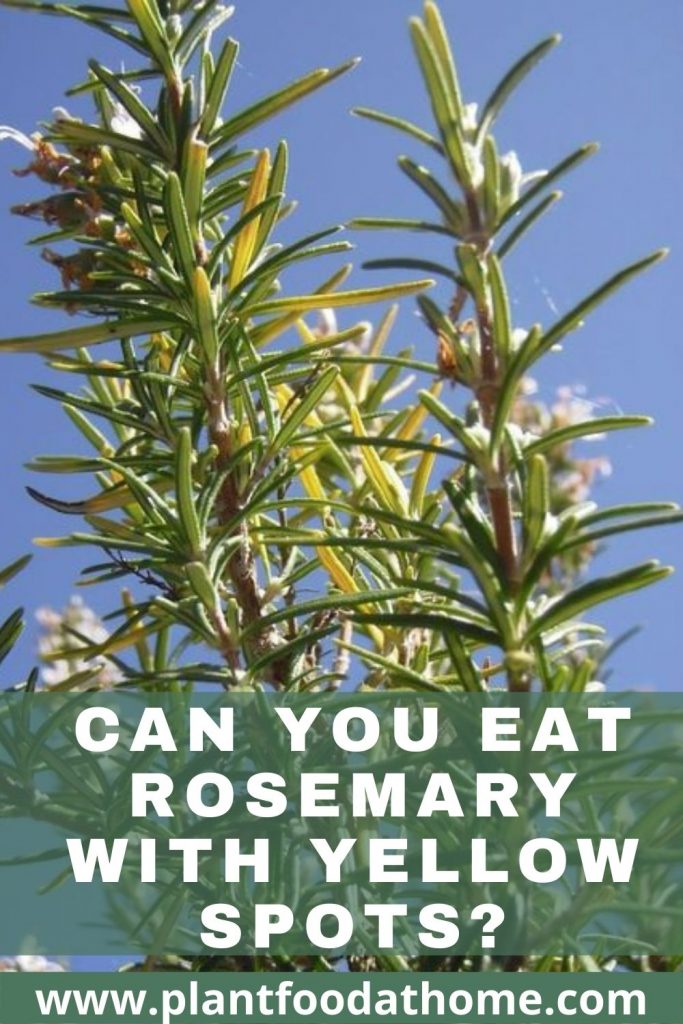While out to harvest some rosemary recently, I noticed my rosemary plant had yellow spots. Wanting rosemary for roasting potatoes, I wondered if you can still eat rosemary with these yellow spots. I also wanted to know what causes the yellow spots on rosemary and how to fix them. So I did some research and here’s what I found.
If pests are causing the yellow spots on your rosemary, give them a thorough wash, and then the rosemary is safe to eat. Should your rosemary plant be yellowing because of environmental factors, such as over-watering or a nutrient deficiency, the rosemary is again still safe to eat. On the other hand, if you determine the rosemary plant is yellowing from disease, it would be best not to eat the leaves.
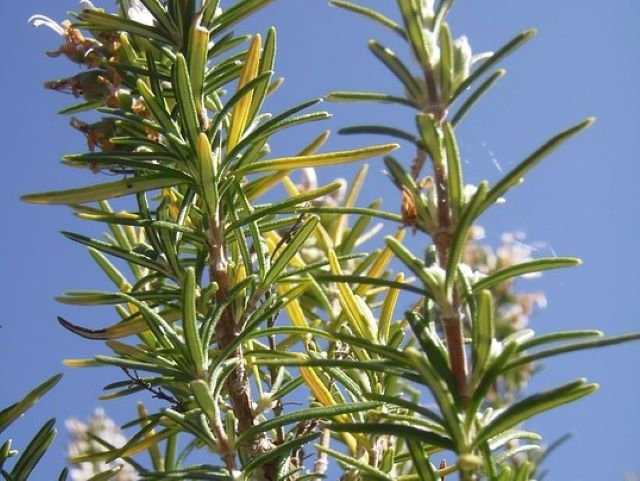
Table of Contents
Tips for Eating Rosemary with Yellow Spots
So as you can see, rosemary with yellow spots is generally safe to eat provided it is not affected by disease. Making the decision to do so is going to be up to the individual but if you’re in a pinch and desperate for some rosemary for roasting your spuds then it’s not going to harm you.
It’s best to give your rosemary a really good clean to wash off any pests. You can do this by washing the rosemary in a mix of a couple of spoonfuls of white vinegar diluted in water. This will ensure the rosemary is clean of any bugs. And white vinegar also helps remove any bacteria so if there was the start of disease, any fungal spores, for example, will be cleaned off.
Eating healthy rosemary is always going to be the priority and it will taste better too. So let’s find out what causes the yellow spots and how to get rid of them.
What Causes Yellow Spots on Rosemary
Change in Weather
Rosemary with yellow spots can be the result of a change in weather. This can attract pests such as aphids or spider mites, or cause diseases such as bacterial or fungal blight.
Rosemary prefers relatively dry conditions. So if rain increases over a prolonged period of time, say a few weeks in a row, rosemary can turn yellow due to disease or attack by pests.
Lack of Fertilization
A lack of nutrients can cause your rosemary plant to turn yellow. Although rosemary is a hardy perennial herb, it does benefit from good soil nutrition.
Pest Attack
Aphids can be attracted to rosemary, especially after prolonged rainfall. Look for very tiny soft, furry insects. They have soft bodies and come in a range of colors but I generally find them to be white, grey or green.
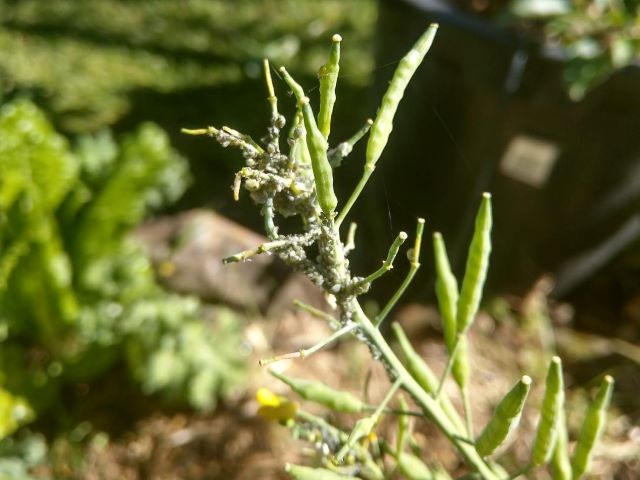
Conversely, spider mites can attack rosemary during very dry conditions. Spider mites can usually be found on the underside of the leaves.
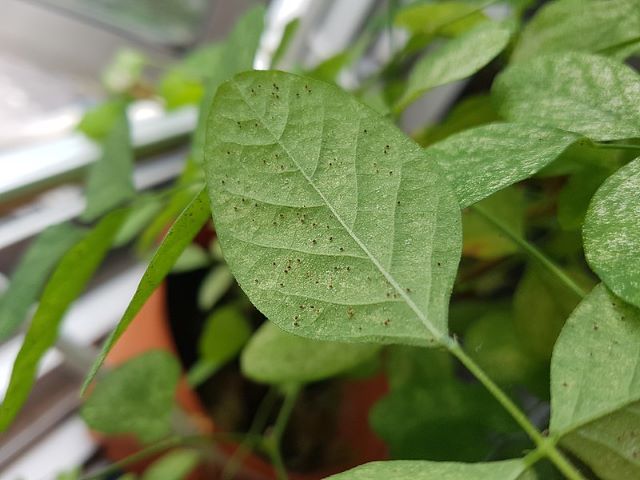
They also come in many colors and are often reddish-brown. They are super tiny and can be difficult to see.
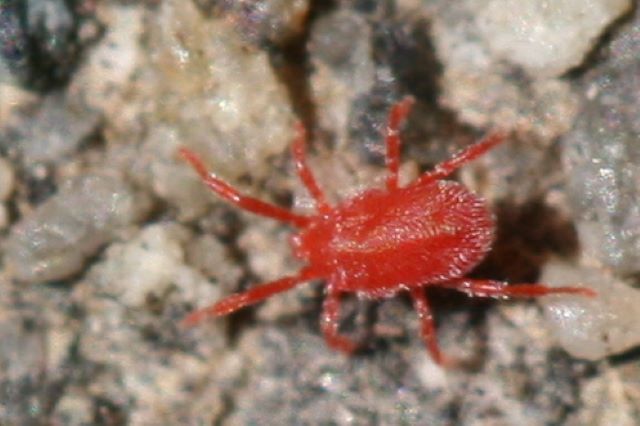
One gardener suggested using white paper under a branch and gently give it a shake. Spider mites should fall off the plant and onto the paper so you can see them a little better to confirm you have them.
Thrips and leafhoppers can also attack rosemary giving the leaves yellow spots, though usually, holes in leaves will also be evident.
Disease
Bacterial and fungal blight can develop especially in overly wet or humid conditions.
How to Fix Yellow Spots on Rosemary
After determining why your rosemary plant has yellow spots, you can then go ahead and fix the problem.
Environmental Factors Affecting Rosemary
First, ensure your rosemary plant has adequate sunlight. As a Mediterranean herb, rosemary thrives in full sun for upwards of 8 hours a day.
Rosemary prefers dryer conditions with low humidity. You can give your rosemary plant a prune to help with airflow. Consider reducing the amount of water given to rosemary as this herb will thrive best on less frequent but deep watering. This will encourage the rosemary plant’s roots to grow deeper into the soil which will help reduce the likelihood of fungus diseases and attack by pests.
Make sure your rosemary plant is not sitting in soggy soil. They prefer loose, well-draining soil.
Fertilizer for Rosemary
A yellowing rosemary plant can be a sign it needs fertilizing.
Rosemary grown in already healthy soil will not require a lot of fertilization, they are not super hungry plants. However, you can keep soil healthy with a topping of compost and aged manure a few times a year and fertilize with an organic herb fertilizer such as this one once or twice a year.
Rosemary Plant Pests
Pests such as aphids and spider mites can be sprayed off the rosemary plant with a strong spray of water. You can do this over a period of 3 days.
Ladybugs love to feed off aphids, so if you see them around the garden, know they will be helping you rid your rosemary of aphids.
For a natural solution to spider mites, predatory mites can be purchased to naturally eat the spider mites.
If aphids or spider mites persist, you can mix up your own spray using 1/4 cup of dish liquid with about 1 gallon of water in a spray bottle. Or use an organic method of control such as horticultural neem oil or insecticidal soap.
Other pests such as thrips and leafhoppers can also be managed with a blast of water followed by the above methods for a persistent attack.
Rosemary Plant Disease
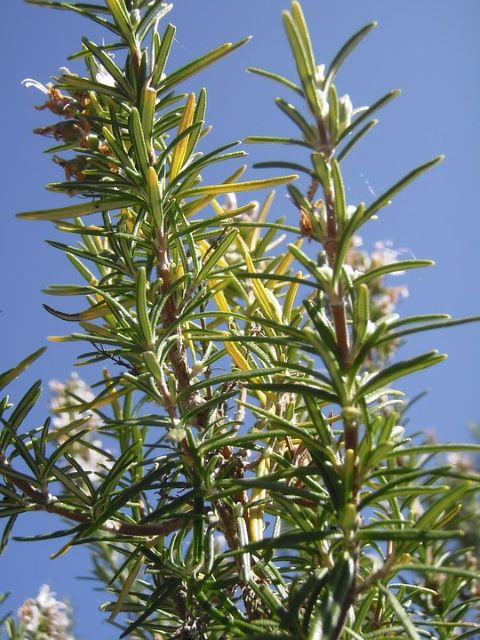
Bacterial or Fungal Blight can appear as a result of wet or humid conditions. Prolonged wet and humid environments can cause your rosemary plant roots to rot.
Reduce watering and allow the topsoil to dry out. Avoid overhead watering, instead water the soil around the rosemary plant.
Prune off any diseased rosemary and discard to avoid the disease spreading.
If your rosemary plant is planted in a particularly wet part of the garden which never seems to adequately dry out, you might have to start again and choose a well-draining spot to plant rosemary.
On a final note, consider the age of your rosemary plant. The lifespan of a rosemary plant is generally 6-10 years. After this time, the plant can become overly woody and it’s best to dig them up and plant new rosemary. Generally speaking though, rosemary is very low maintenance and a hardy herb that rarely has growing problems.
Further reading:
- 4 Drought Resistant Herbs To Plant At Home
- What To Do With Celery Leaves (Preserving and Recipe Ideas)
- What Makes Eggplants Bitter (and how to fix it)
- Can You Eat Unripe Avocados? Answered!
- Can You Eat Apples With Brown Spots? Answered!
- Spots on Oregano Leaves? Causes and Solutions
- Can You Eat Olives Off the Tree? Answered!
